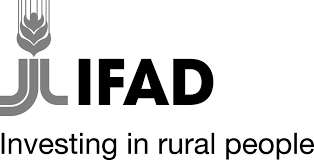Kuala Lumpur, 7 May 2018: Last year, migrant workers sent US$ 256 billion to their families in the Asia-Pacific region, according to the report “RemitSCOPE – Remittance markets and opportunities – Asia and the Pacific” and a new webportal on remittances released today by the International Fund for Agricultural Development (IFAD). While remittances benefit about 320 million family members in the region, most of them in rural areas, remittance markets still need to transform to ensure that families can benefit fully from the flows.
”The promise of technological innovation in the remittance marketplace could bring about a fundamental transformation for hundreds of millions benefiting from these flows. But this transformative change has not yet happened,” says Pedro De Vasconcelos, IFAD Senior remittance expert.

In addition, De Vasconcelos pointed out that outdated regulatory barriers on both sending and receiving ends result in higher and less transparent costs for the 2 billion transactions a year – most amounting to just US$200 to US$300 each. They also make it less likely and more difficult to convert remittances into savings and investments.
According to the report, the cost of sending money to the region has decreased by only 0.67 percent since 2015, reaching 6.86 percent in 2017. This is still more than twice the 3 per cent set for high volume corridors by the international community in its Sustainable Development Goals. Lower transfer costs mean more money available to families.
Transfer costs vary significantly across the region. Rates in small Pacific island states are higher at 8.9 percent of the amount sent. In East Asia they are 8.26 percent while corridors from the Russian Federation to Central Asia are extremely low at 1.21 percent.
According to the report, cash-to-cash transactions remain by far the most common form of transfer. It is only recently that technology is beginning to move markets towards account-to-account transfers through digital operations. There are now more than 1 million payment locations through the region, reflecting a greater digitalization of transactions.
But De Vasconcelos explains further efforts are needed. “For digitalization of transfers to happen, regulators and private sector companies need to work further together to harmonize legal and regulatory frameworks between countries and support the design of products driven by customer needs,” he said.
In the region, families generally spent about 70 percent of remittances to meet basic needs, such as food, clothing, healthcare and education. The remaining 30 percent, amounting to $77 billion, could be saved and invested in asset-building or income-generating activities, helping families to build livelihoods and their future, according to De Vasconcelos.
“If you give people the opportunity to invest, they will invest, but for that, access to financial services is key, and still too many families, in particular in rural areas, cannot save, borrow and invest money through proper financial services,” said De Vasconcelos.
Although financial inclusion has increased since 2011 with half of adults in the region having a bank account (excluding high-income economies) this does not represent the reality of the substantial majority of remittance receiving families where financial exclusion remains predominant.
Remittances are particularly crucial in rural areas where poverty is the highest. Worldwide, an estimated 40 percent of the total value of remittances go to rural areas. However, in the Asia- Pacific region, remittances go disproportionally to countries with a majority of rural populations such as Nepal (81%), India (67%), Viet Nam (66%), Bangladesh (65%), Pakistan (61%) and the Philippines (56%). Remittances to rural areas are generally costlier due to expenses associated with offering access points in distant locations.
Key facts from the report:
- Remittances to the Asia-Pacific region amounted to US$ 256 billion in 2017 representing 53 percent of flows worldwide. They have grown by 4.87 percent since 2008, with rates flattening in recent years.
- India (US$69 billion), China (US$64 billion) and the Philippines (US$33 billion) are the three largest remittance-receiving countries in the world. Pakistan (US$20 billion), and Viet Nam (US$14 billion) are also in the top 10.
- About 70 percent of remittances sent to Asia and the Pacific come from outside the region and in particular from the Gulf States (32 percent), North America (26 percent) and Europe (12 percent).
- Remittances contribute to the region more than 10 times the official development assistance in the region.
- In the region, 400 million people, one out of every 10 people, are directly affected by remittances either as a sender or as a receiver.
- Around US$6 trillion in remittances are expected to be sent to developing countries by 2030: over half of these flows will arrive in the Asia Pacific regions, very often in small towns and villages.
- Increasingly the majority of migrants (60 percent) now find work in the region with Hong-Kong, Japan, Malaysia, Singapore, South Korea and Thailand being major destinations for migrant workers.
- Remittance outflows from the region amount to US$78 billion, and 93 percent of the flows remain in the region.
Global Forum on Remittances, Investments and Development
“Remitscope” will be presented at the Global Forum on Remittances, Investments and Development – Asia Pacific to take place in Kuala Lumpur on 8-10 May. The forum will bring together more than 300 policymakers, private sector stakeholders and civil society leaders to map out the road ahead for enhanced remittances.
RemitSCOPE webportal: The report is a synthesis of the latest remittance data and analysis and remittance-market profiles on 50 individual countries available at www.remitscope.org. The ambition of this new webportal is to help decision-makers and industry transform remittances markets for cheaper, faster and safer transactions, in particular for rural areas.
IFAD has invested in rural people for 40 years, empowering them to reduce poverty, increase food security, improve nutrition and strengthen resilience. Since 1978, we have provided about US$19.7 billion in grants and low-interest loans to projects that have reached some 474 million people. IFAD is an international financial institution and a specialized United Nations agency based in Rome – the UN’s food and agriculture hub.
